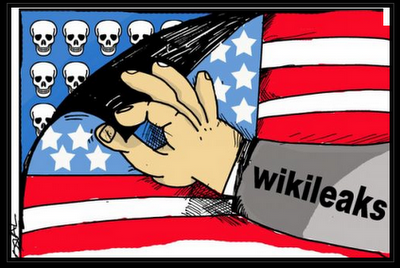
The whole of this session considered the question:
WHY SHOULD MEDIA REGULATION BE OF INTEREST TO A MEDIA STUDENT?
The notes below relate to class discussion but also provide a potential essay structure.
The session began with a consideration of theory and the fact that regulation suggests that the media is considered by various UK governments [the agencies responsible for dictating regulatory power] to be influential. This could be related to Marxist Theory and Reception Theory may be used to explore the idea that regulation can be problematic. Essays need to refer to 'examples' of media influence. See my violence essay.
The second section of the essay needs to examine how difficult it is to regulate effectively. Reference was made to the Barnardos/Women's Aid campaigns. Independent research will be required if students are to construct a precise argument. Why was the Women's Aid advert banned by Clearcast? What was the result? Why did the ASA refuse to regulate the 'Break The Cycle' campaign? What does this tell us about the difficulty of media regulation? Reference could be made to the film The Life Of Brian.
The next phase of the essay could explore advertising and link this to the objectification of women. Reference could be made to a whole series of banned advertisements. We discussed Lynx/Dove/Reebok Easytone/ RyanAir. Why should these images be regulated? We clearly have an issue in this country with violence towards women. Could the advertising industry be contributing to the negative representation of women? The Sun's Page 3? Students might want to refer to the concept of HEGEMONY. Students might want to peruse the links below:
http://www.object.org.uk/
http://www.independent.co.uk/voices/comment/ban-page-3-lord-leveson-and-put-an-end-to-upskirt-shots-media-sexism-and-discrimination-8364828.html
http://www.youtube.com/watch?v=pgqr6GQDci4
http://www.youtube.com/watch?v=snFqVJsLUoU
http://www.dailymail.co.uk/news/article-2101386/Ryanair-advert-Red-Hot-Fares--Crew-banned-watchdog-online-petition-success.html
http://www.dailymail.co.uk/news/article-1312149/Pregnant-nun-ice-cream-ad-banned-Catholic-outcry-eve-Popes-visit.html
http://www.bbc.co.uk/news/magazine-20252921
The next potential paragraph of the regulation essay could explore the moral responsibility of the media and the significance of THE LEVESON INQUIRY. Reference was made within class discussion to Hillsbrough, Ian Tomlinson, The News of The World and the phone hacking scandal, The treatment of the McCann family, Christopher Jeffries...on and on...the question I asked you lot was: To what extent should a newspaper offer a sense of moral responsibility? What does the Leveson report tell us about the state of British newspapers? Why is the PCC considered by Ed Milliband to be a 'toothless poodle'? Do you agree that the British press will lose its freedom if Leveson's ideas are embraced? Will regulation result in censorship? What are the arguments AGAINST implementing Leveson's new model of regulation? Should a law be introduced to protect the public from the press? Would you, unlike David Cameron, implement Leveson's regulation model? Students need to consider what the enquiry tells us about the British media and its relationship with politicians, the police and the public. Should British newpapers be trusted to regulate themselves? What happened in Denmark when they embraced Leveson's model? Click on links below for resources:
http://fishymediaresources.blogspot.co.uk/2012/11/levesonthe-aftermath.html
http://fishymediaresources.blogspot.co.uk/2012/11/leveson-inquiry-material.html
http://fishymediaresources.blogspot.co.uk/2012/09/the-suns-reporting-of-hillsborough.html
The final section should explore the regulation of the internet. Class discussion was excellent so refer to your notes. How can you regulate the content of the internet? Reference must be made to SOPA and the Communications Data Bill. Can the internet ever be subject to regulation? Independent study required. Examples?
http://www.bbc.co.uk/news/uk-politics-20676284
http://www.bbc.co.uk/news/uk-northern-ireland-20677850
http://www.bbc.co.uk/news/uk-politics-20157059
http://www.bbc.co.uk/news/uk-politics-19968068
http://fishymediaresources.blogspot.co.uk/2012/09/viral-video-causes-unrest.html
http://fishymediaresources.blogspot.co.uk/2012/04/kony-2012-invisible-children.html
The conclusion needs to be concise and personal. I want the final section of this essay to offer a strong, informed and considered personal opinion. Answer the essay title directly. Don't repeat yourself.
HOMEWORK: Complete the essay. I expect the essay at the beginning of our second session in the New Year. I expect the essay to offer clear evidence of independent research and critical autonomy.
































